1,000+
Satisfied Customers
32+
Years of Trust
When your product makes its debut, it deserves to shine. It's not just about putting it out there; it's about showcasing your brand’s essence. In addition to the basic shape of the packaging, its decoration and design play an important role in the purchase decision. Effective labels serve as your brand's voice in communicating with your customers.
Food & Beverages
Paints
In this process, labels are placed inside the mould before the plastic material is injected, resulting in a seamless integration of the label with the packaging during moulding.
In mould label printing allows for high-quality intricate graphics, logos, branding and product information which results in an alluring appearance with vibrant colours and sharp details. Labels are less prone to damage as they're enclosed within the container, making them resistant to scratches, moisture, and other environmental factors.
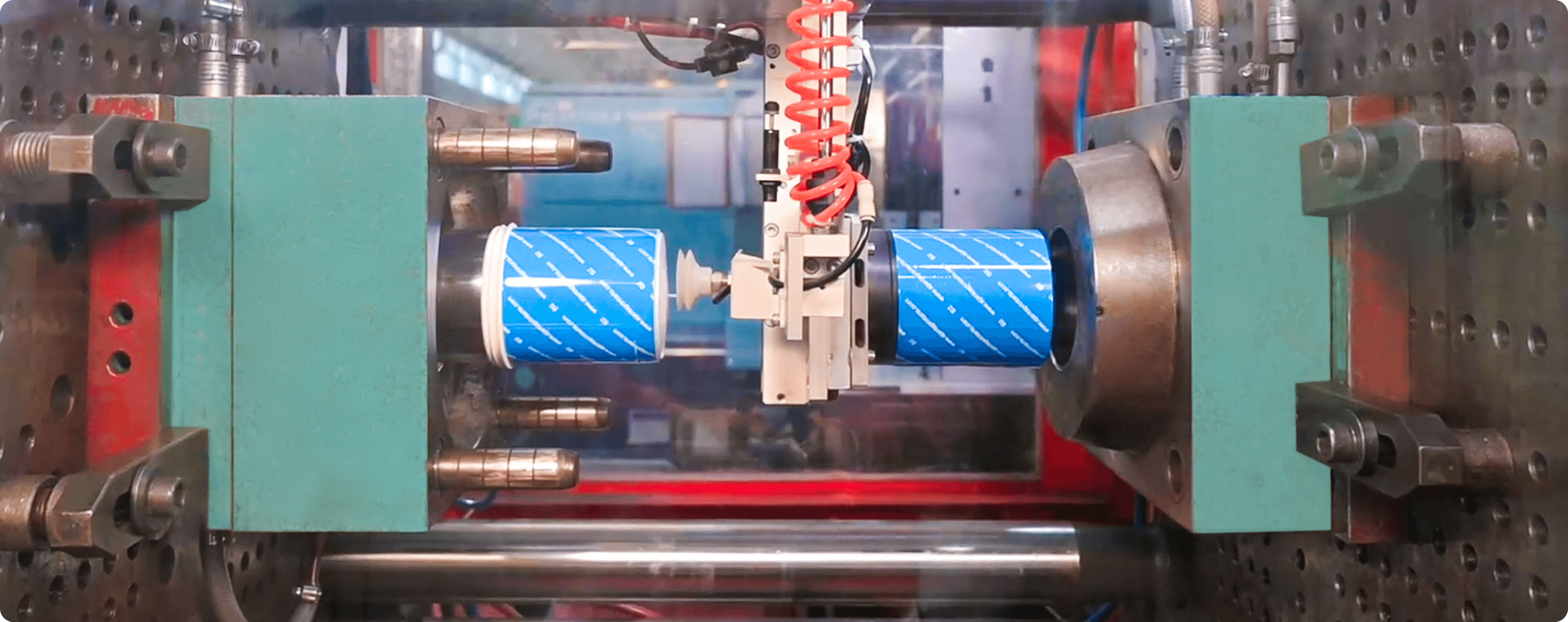
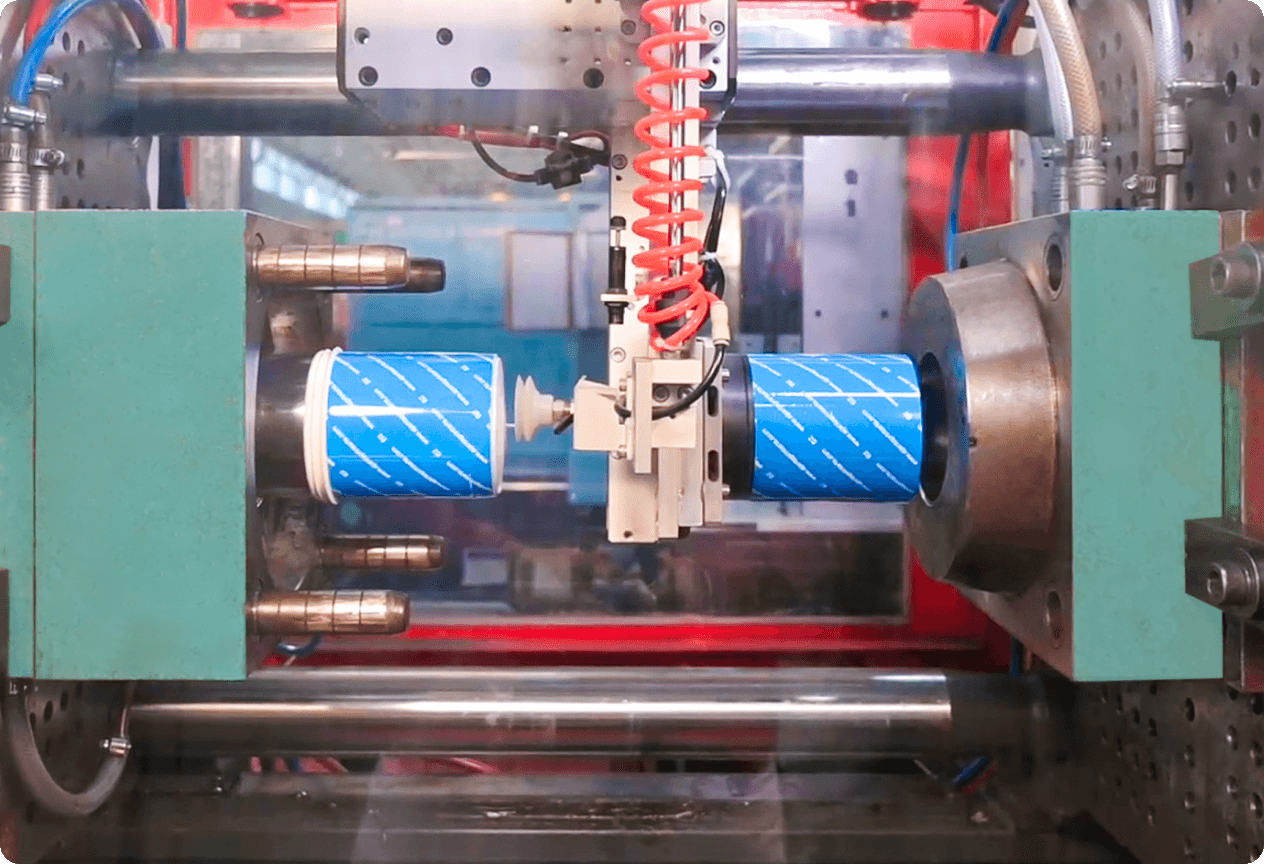
Durable labels allow us to withstand the rigours of e-commerce and other environmental factors.
Lends a visually striking and professional appearance for the final product.
Customers can achieve vibrant and detailed branding elements.
The technique accommodates various container shapes and sizes, to align with your specific product requirements.
The efficiency of the IML process also leads to reduced waste, as the label and product are ideally made from the same plastics.
Lubricants
Paints
Construction Chemicals
Dry offset printing involves transferring ink from a plate to a rubber blanket before being applied to the printing surface.
It is primarily used for cylindrical and conical-shaped objects, particularly containers like pails, cups, tubes, and cans. It provides high-resolution detailed and vibrant prints with intricate designs, sharp text and vivid graphics.
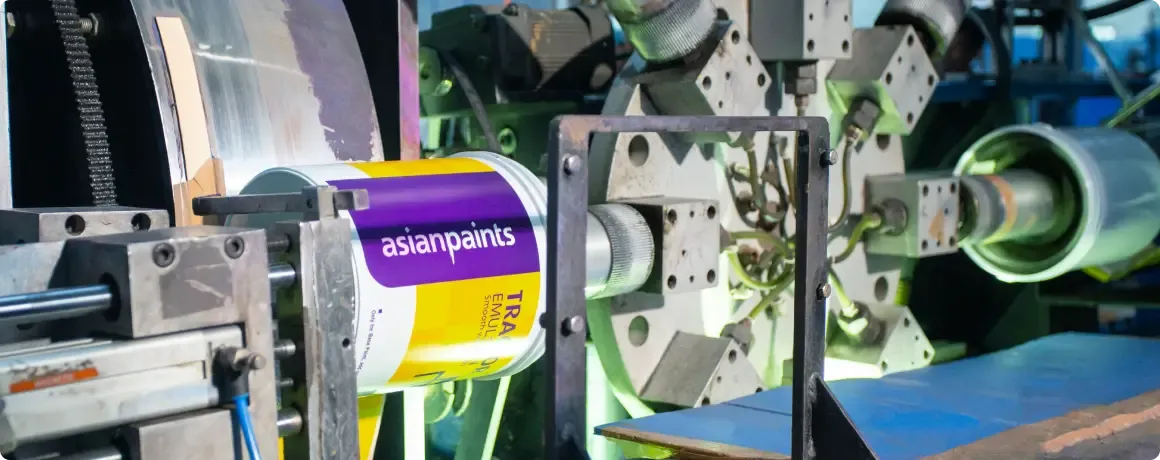

It offers high-resolution printing with vibrant colours and sharp details, making it ideal for intricate designs and branding elements.
Dry offset printing is suitable for high-volume production runs as it allows for rapid setup and efficient printing, resulting in shorter lead times.
Compared to other printing methods, dry offset printing can be more cost-effective, especially for medium to large production runs.
Paints
Food & Beverage
Lubricants
Construction chemicals
Heat transfer labelling (HTL) uses a pre-printed film/label whose ink is transferred through heat onto the packaging. Artworks with a large number of colours can be printed on the packaging to give an attractive multi-hued finish. Its superior adhesion and durability make it suitable for various containers while making it almost impossible to duplicate.
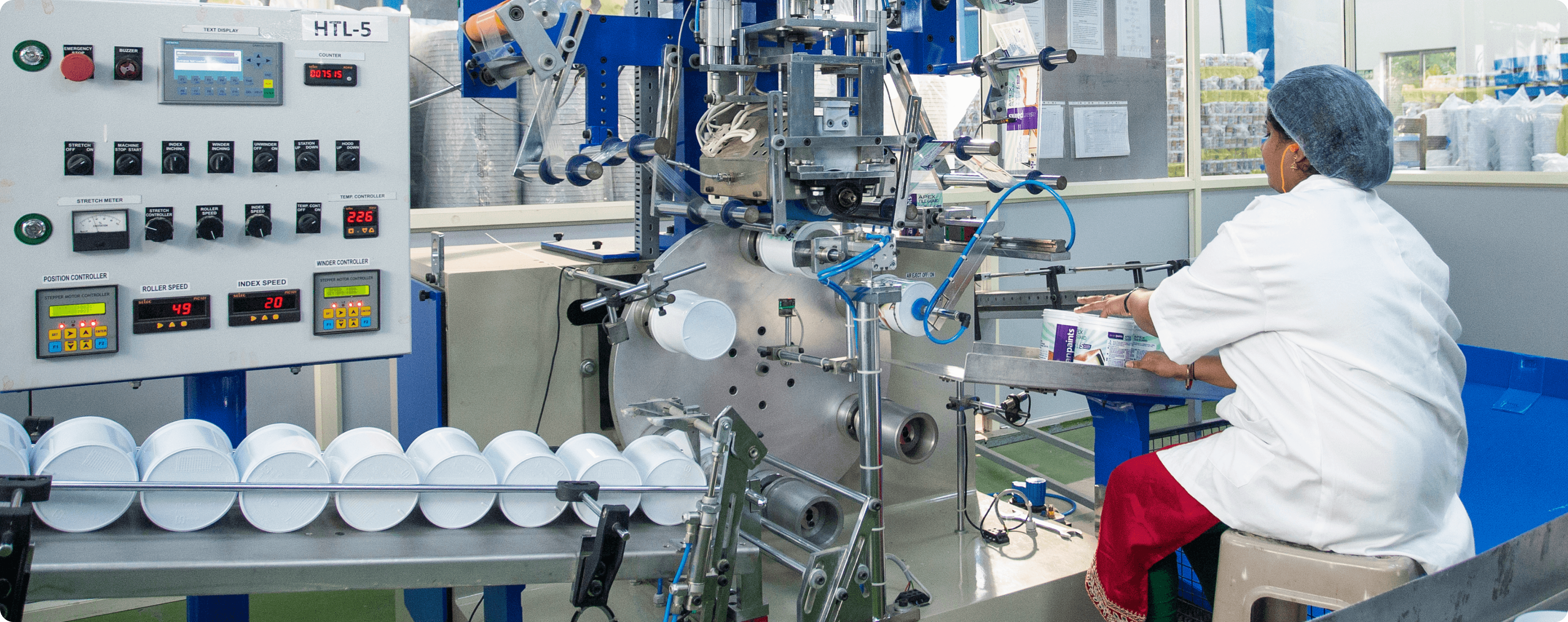
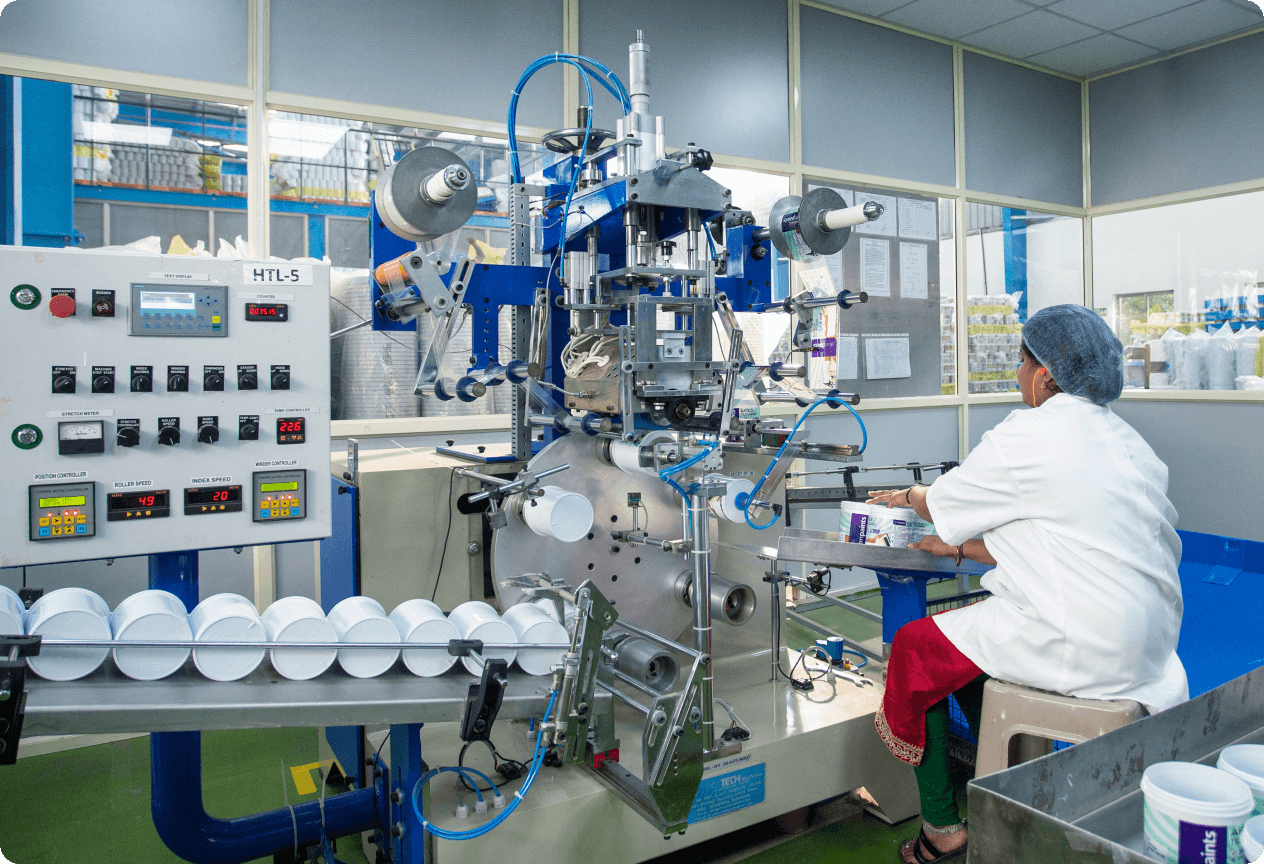
The heat transfer process creates labels that are highly durable and resistant to fading, scratching, and moisture, ensuring long-lasting quality even in challenging environments.
It allows for easy customisation of labels with variable data such as batch numbers, barcodes, and QR codes, enabling traceability and brand personalisation.
It can achieve high-resolution prints with fine details and smooth gradients, resulting in attractive and professional-looking designs.
Heat transfer labelling can be a cost-effective solution for both short and long production runs, as it eliminates the need for pre-printed labels and reduces waste.
Compared to other labelling methods, heat transfer labelling generates less waste and has lower emissions, making it a more environment friendly option.
Food & Beverage
Paints
Lubricants
Construction Chemicals
Agro
Personal Care
Home care
Screen printing is a versatile and popular printing technique used to transfer ink onto plastic surfaces. It is a process that involves creating a stencil (or screen) and using it to apply layers of ink onto the printing surface.
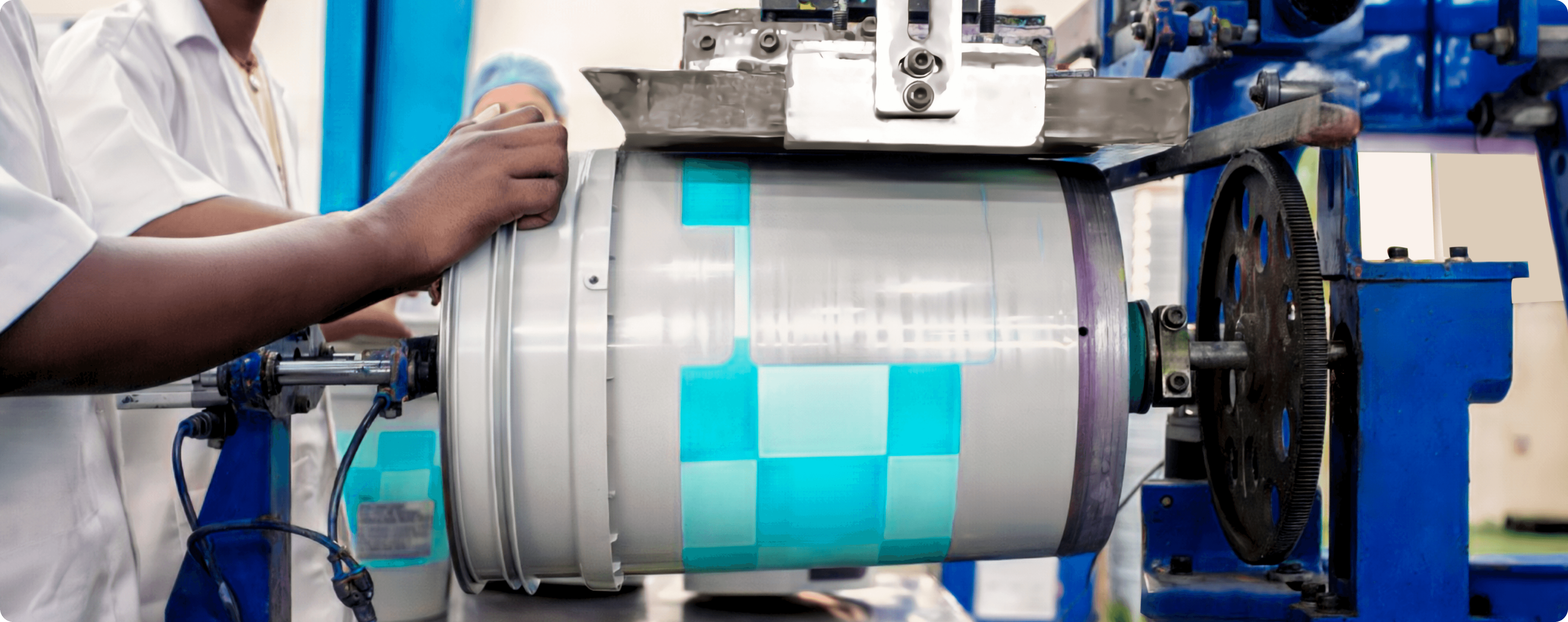
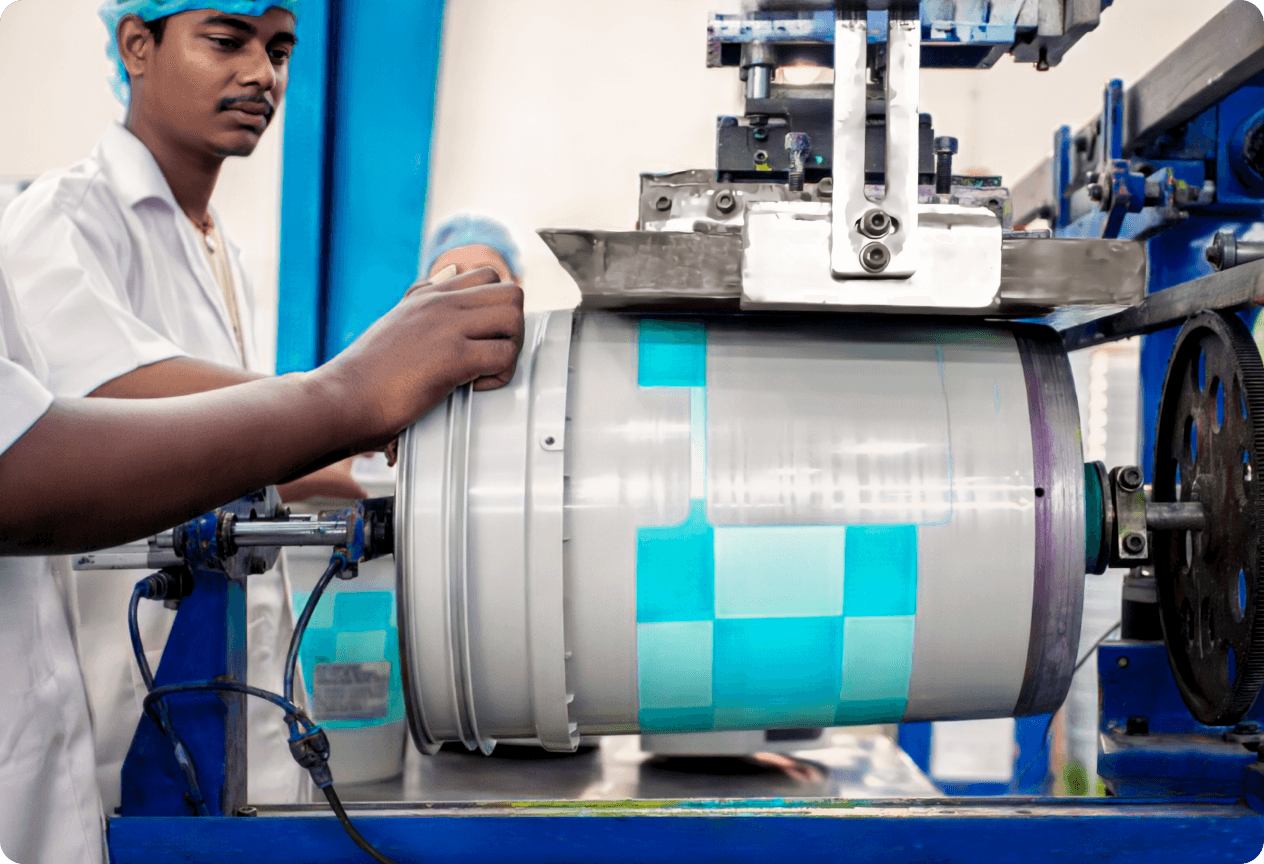
Ability to work with a wide range of inks, including speciality inks like metallics and fluorescents.
Screen printing inks are highly durable and resistant to abrasion, fading, and moisture, making them suitable for packaging applications where long-lasting print quality is essential.
Screen printing allows for the use of vibrant, opaque colours that stand out on plastic packaging, enhancing brand visibility and appeal.
Screen printing offers flexibility in terms of design customisation, allowing for the printing of variable data such as batch numbers, barcodes, and promotional messages.
Screen printing is a cost-effective solution for both short and long production runs, particularly for single-colour or simple multi-colour designs.
Screen printing processes are typically fast and efficient, making them suitable for quick turnaround times and tight production schedules.
Cosmetics & personal care
Hot foil stamping is a printing method that adds a metallic, shiny, or matte finish to surfaces through the application of a thin layer of foil using heat and pressure.
It provides a luxurious, eye-catching finish, especially with metallic or holographic effects, enhancing the perceived value of the product and is chosen for its ability to create elegant and high-quality finishes. This design technique adds a touch of luxury to your plastic packaging.
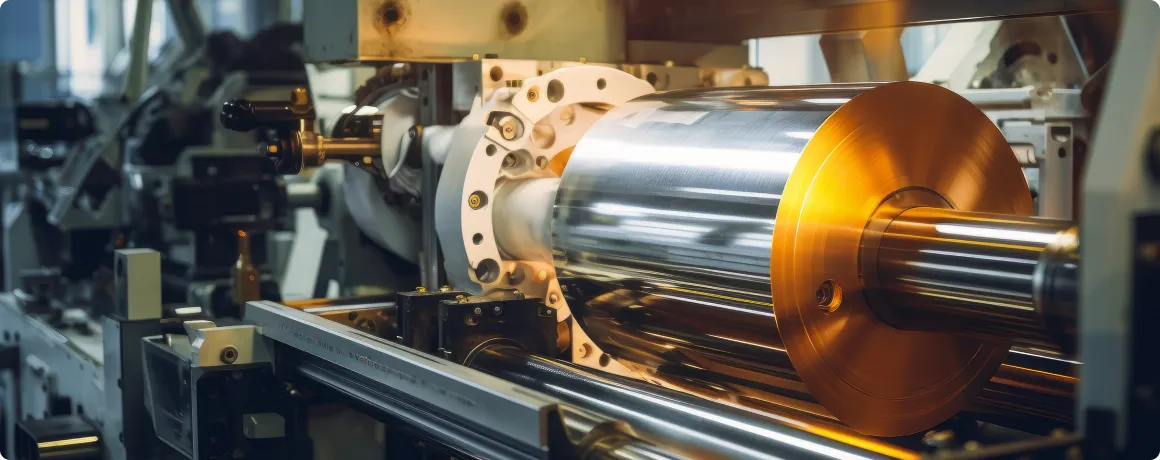
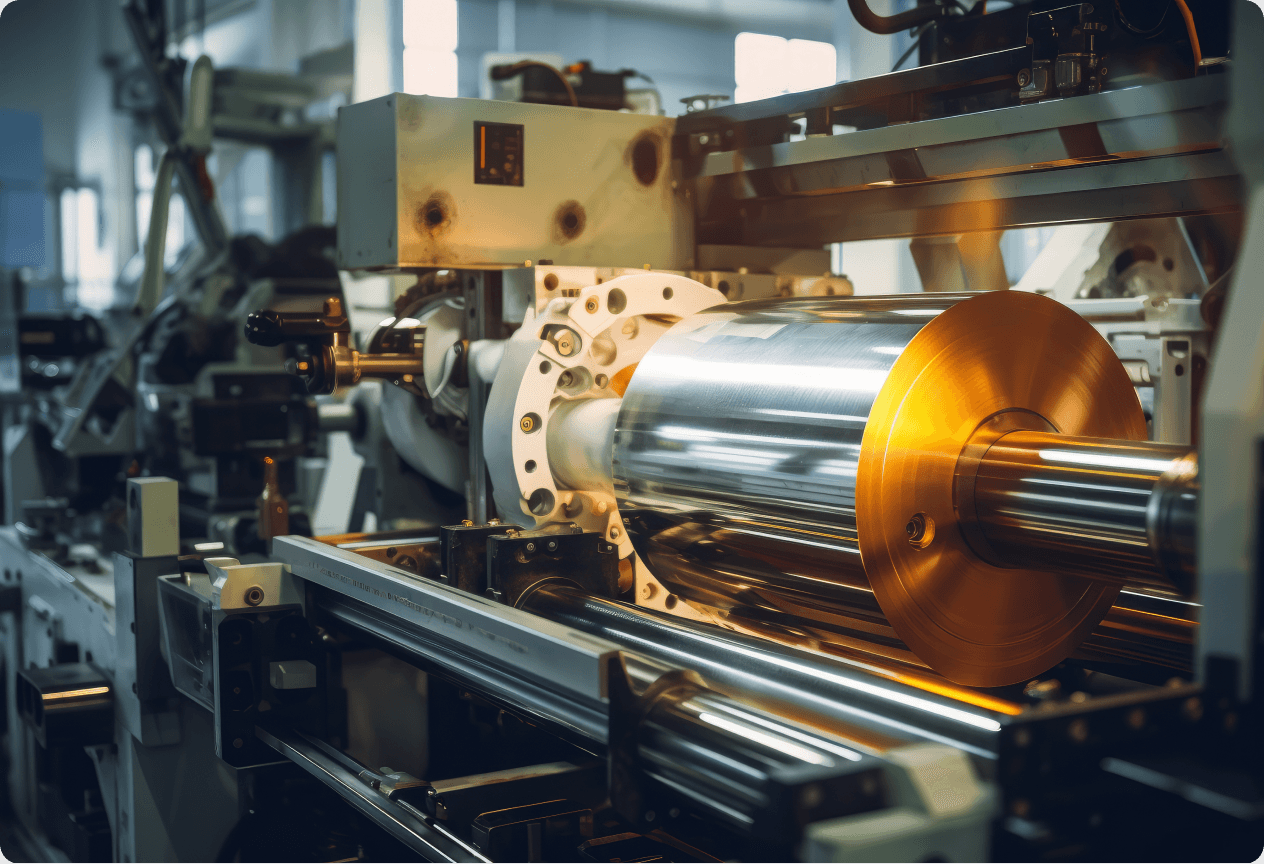
A wide range of metallic colours and finishes, including gold, silver, bronze, and holographic among others, allows for customisation to match brand aesthetics.
Can be applied to various plastic substrates, including rigid and flexible materials, in different shapes and sizes, offering versatility in design options.
Allows customisation of designs with intricate details, fine lines, and small text, enabling brand logos, patterns, and other decorative elements to stand out.
Home care
Personal Care
Food & Beverage
Shrink Sleeve-
Shrink-sleeving is used to label products by applying a sleeve or tube made of heat-sensitive material (usually plastic film) to the packaging. This sleeve is then shrunk and stuck tightly to the packaging using heat, conforming to the shape of the item. It allows for full wrap, 360-degree coverage of containers, and maximising space for branding, marketing messages, and product information.
Labelling- Labelling involves using an adhesive to paste a label that contains printed text, graphics, barcodes and other visual elements.
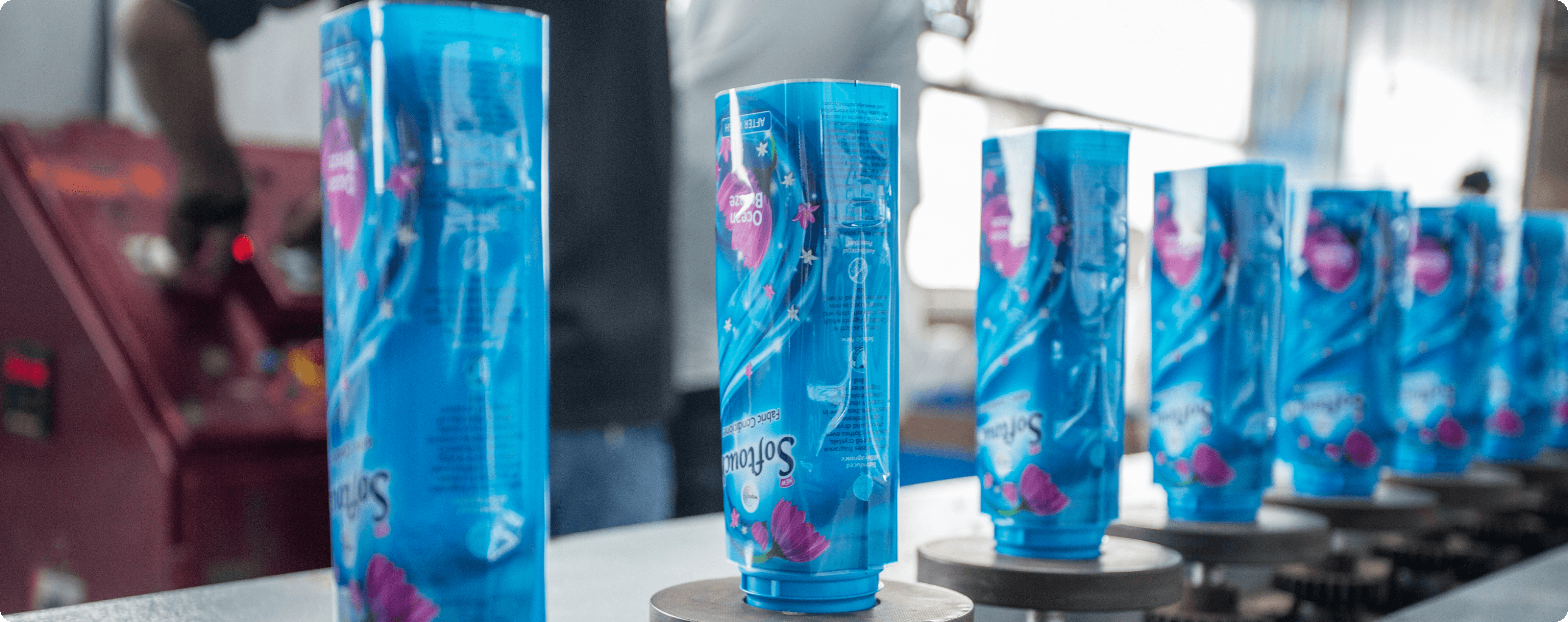
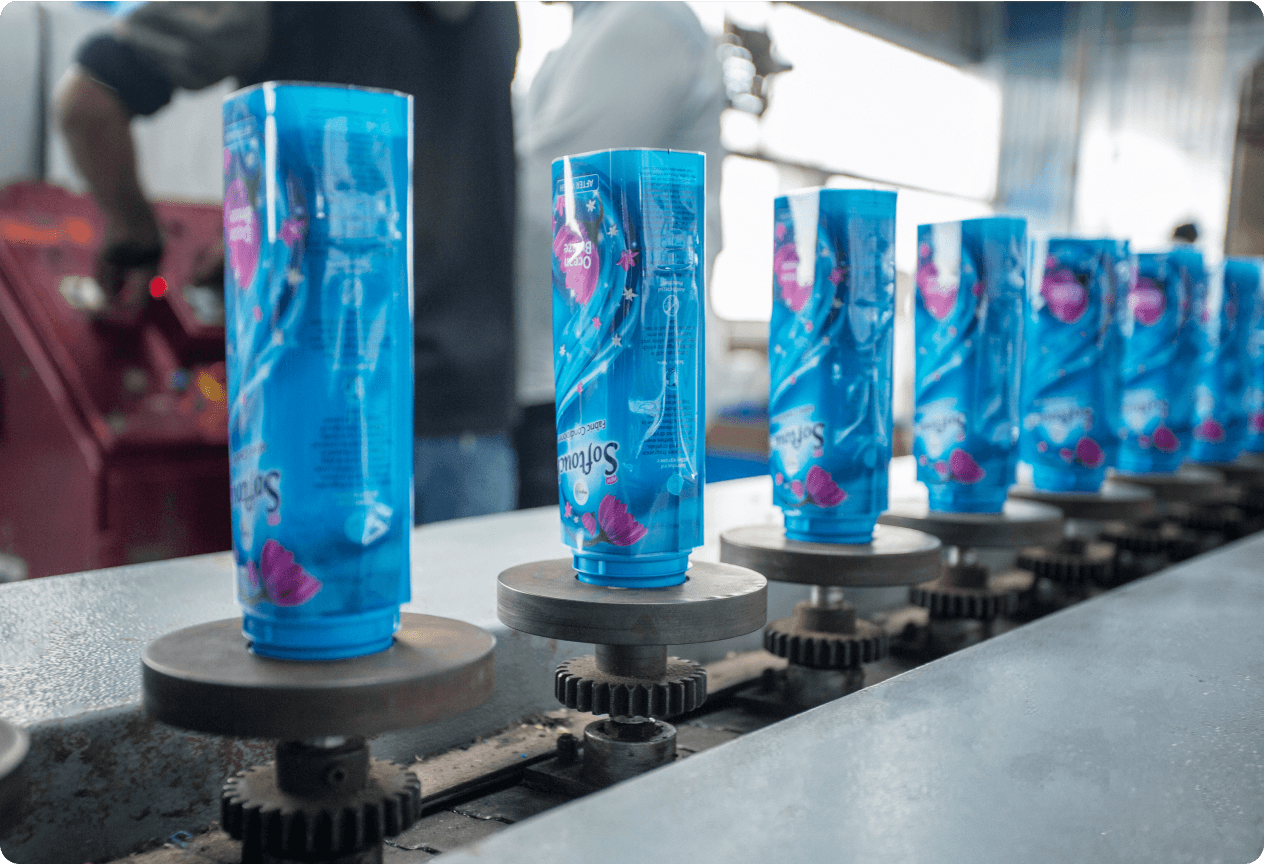
Shrink sleeves can act as a protective barrier, safeguarding the contents of the container from moisture, tampering, and UV radiation.
Shrink sleeving offers flexibility in design, allowing for intricate graphics, a variety of colours, and eye-catching effects such as metallic finishes, matte coatings, and holographic elements.
Shrink sleeves are compatible with various container materials, shapes, and sizes, including plastic, glass, and metal containers. They can be applied to cylindrical, square, or uniquely shaped containers with ease.
Shrink sleeves can incorporate tamper-evident features such as perforations or shrink bands, providing consumers with confidence in the integrity of the product.
Shrink sleeves can be made from recyclable materials, and their lightweight nature reduces transportation costs and environmental impact compared to other alternatives.
Personal Care & Cosmetics
Metallizing is a process used to deposit a thin layer of metal onto the cap or container to provide a metallic appearance to surfaces for aesthetic purposes in products like automotive parts, cosmetics packaging, decorative items, etc. This creates a high gloss, chromium, nickel and satin finish preferred for cosmetic and personal care packaging.
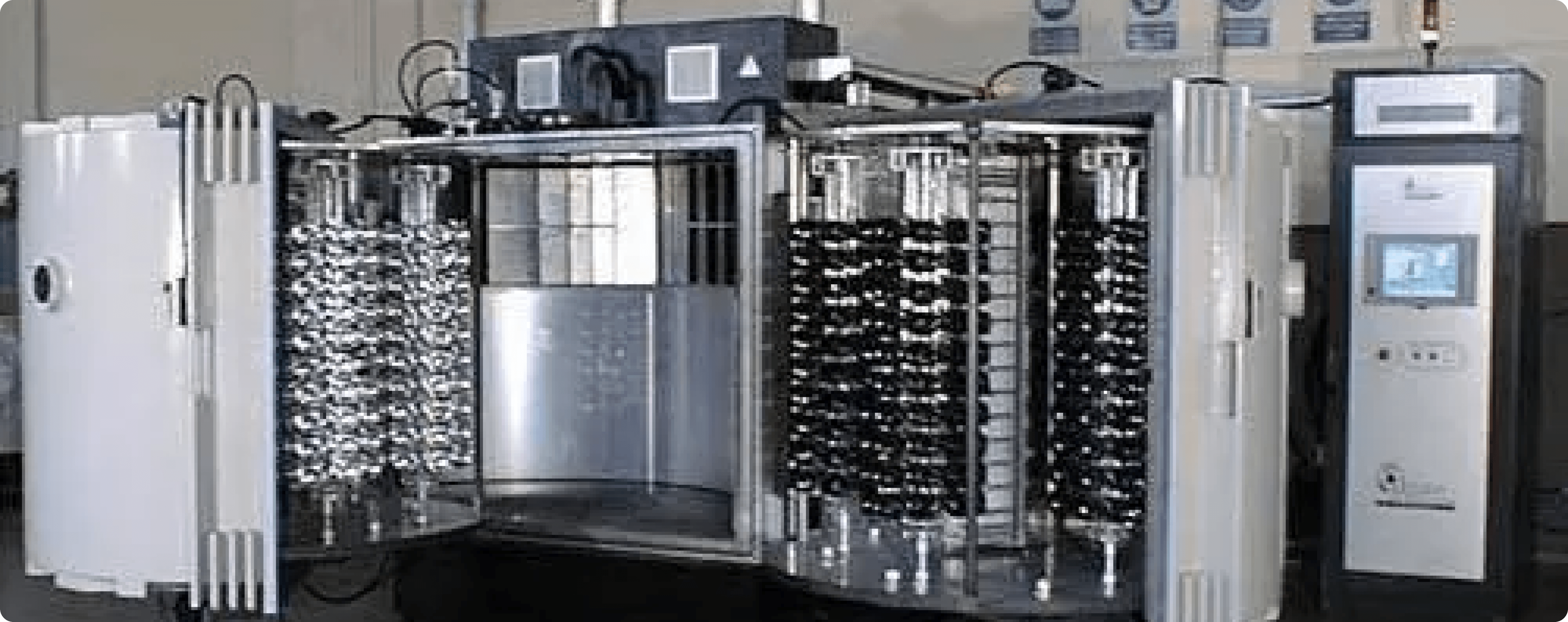
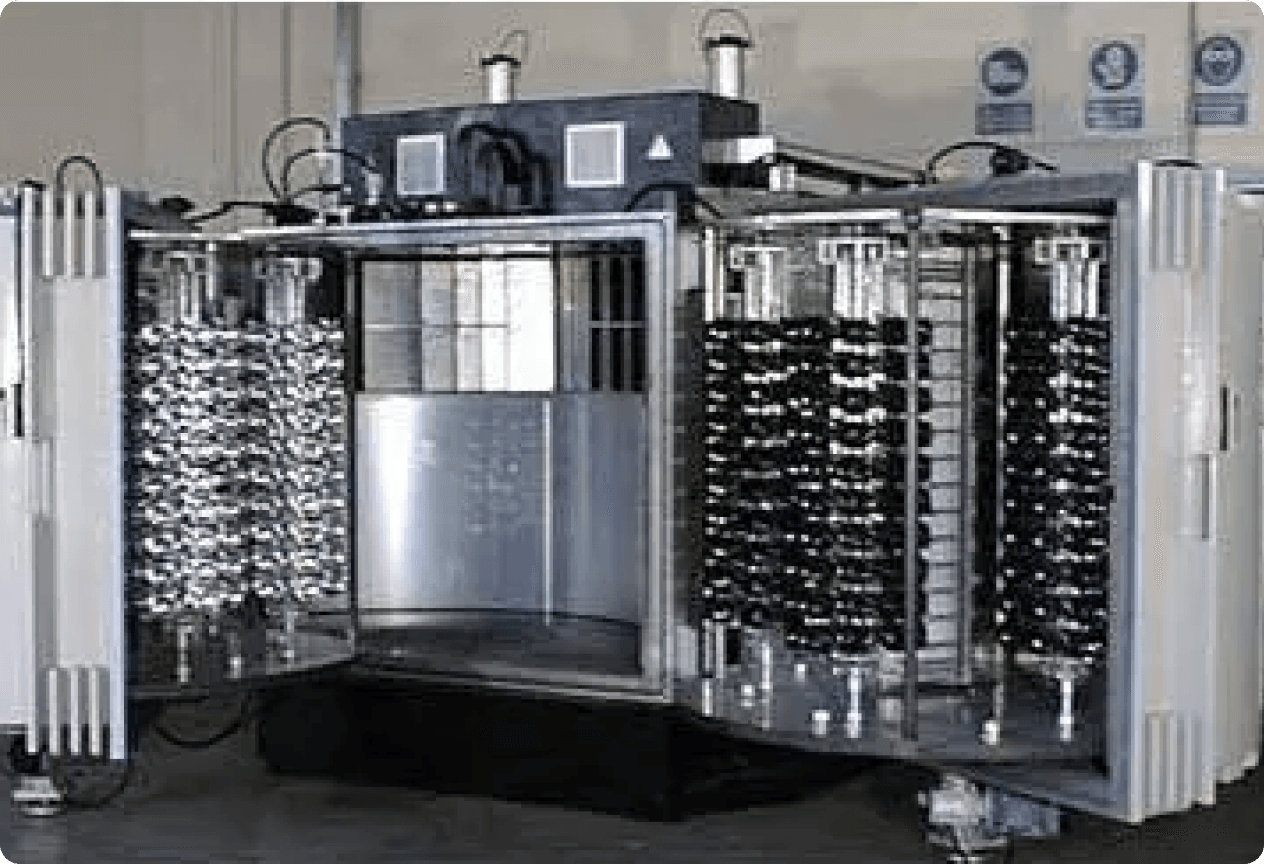
The metal layer acts as a barrier against moisture, gases, and light, improving the shelf life and freshness of packaged products.
Metallised substrates provide a smooth, uniform surface that is suitable for printing high-quality graphics, logos, and text, allowing for enhanced branding and marketing opportunities.
Metallising can be applied to a wide range of plastic substrates, including films, sheets, bottles, and containers, offering versatility in packaging design and application.
Metallised plastic packaging can offer cost savings compared to traditional metal packaging materials such as aluminium or steel, while still providing similar aesthetic and functional benefits.